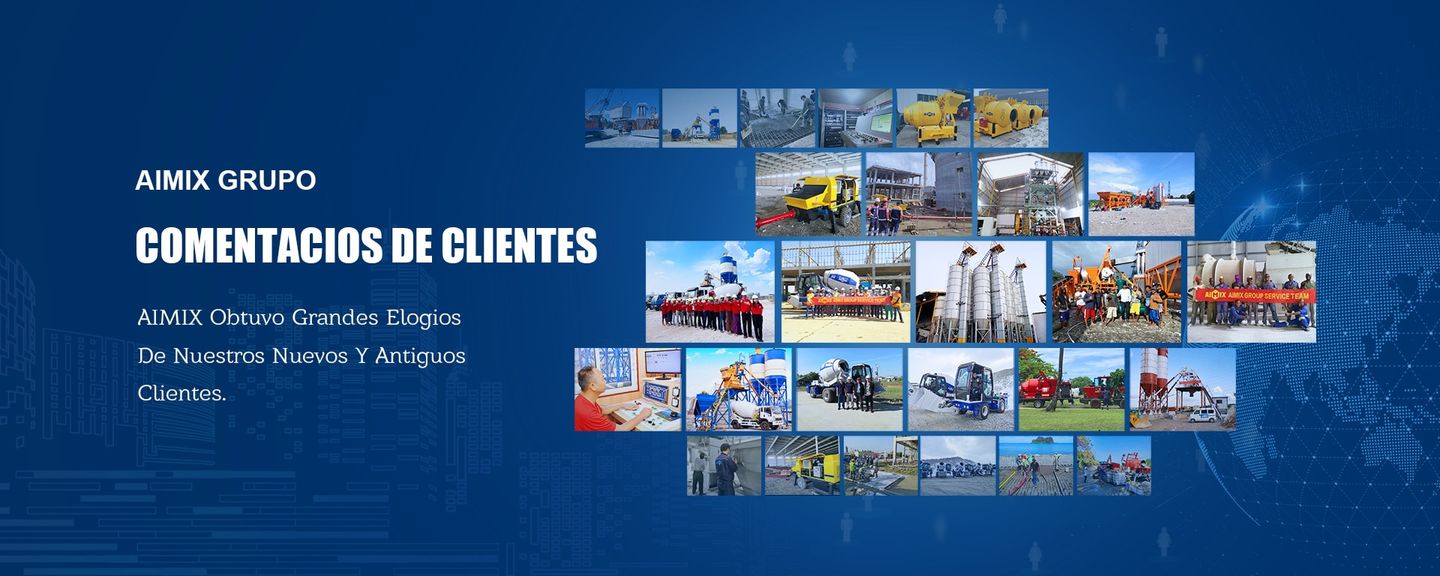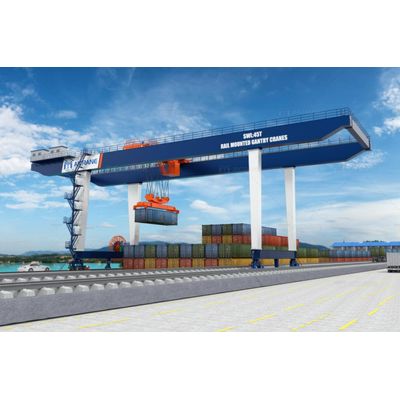

- Home
- Companies
- Aimix Group Co., Ltd
- Articles
- Lead Time and Delivery Considerations ...

Lead Time and Delivery Considerations for RMG Projects
Rail Mounted Gantry (RMG) cranes are critical components of container terminals, railway yards, and logistics hubs. These massive structures are engineered to move containers and heavy cargo efficiently along rail lines, making them essential for seamless freight operations. However, their scale and complexity mean that delivering an RMG crane project on time requires meticulous planning. Lead time and delivery considerations must be addressed early to prevent project delays, cost overruns, and operational disruptions.
This article explores key aspects of lead time and delivery in RMG projects, offering practical insights for smooth execution from procurement to commissioning.
Understanding Lead Time in RMG Projects
Lead time in an RMG project encompasses the total duration from placing the order to commissioning the RMG crane at the site. It involves several sequential stages: design and engineering, material procurement, manufacturing, testing, shipping, and final installation.
Each of these stages demands coordination between the supplier, logistics providers, site contractors, and the client. For projects involving custom engineering or complex automation features, this timeline can extend significantly. Understanding the duration and requirements of each stage is essential for effective project planning.
Factors That Influence Lead Time
Several key variables can influence how long an RMG crane project will take from start to finish.
Complexity of Design
Projects that demand customized crane systems—such as dual-trolley RMGs, long-span models, or integration with port automation systems—require more engineering time. If specialized components or features like energy recovery systems or automated container identification are involved, additional planning and coordination will be necessary.
Client-Specific Requirements
RMG cranes often need to comply with specific national or industry standards. These could include CE certification in Europe, ANSI in North America, or ISO standards globally. Additionally, clients may request particular brands of motors, gearboxes, or PLCs, which might have longer procurement cycles or require import permits, further impacting lead time.
Supply Chain and Material Sourcing
Procurement of structural steel, electrical components, motors, control panels, and rails must be carefully scheduled. Any global disruptions, such as steel shortages or semiconductor delays, can postpone the start of manufacturing. It is essential to plan procurement early and maintain supplier relationships to minimize risks.
Manufacturing Capacity
The production schedule of the crane supplier significantly affects the delivery timeline. If a manufacturer is managing multiple large orders simultaneously, your RMG project may be placed in a queue. Confirming production slot availability and securing it through early payment or contract signing can help avoid such delays.
Shipping and Logistics
Transporting an RMG crane requires careful logistics planning. Components are typically shipped in large sections or containers and may involve sea freight, inland transport, and crane handling. Port congestion, customs delays, or permit issues for transporting oversized loads can disrupt the schedule. Choosing the right shipping routes and carriers, and ensuring documents are in order, are vital.
Installation Site Readiness
Even if the crane arrives on time, delays in site readiness—such as unfinished foundations, incomplete rail tracks, or unavailable electricity—can stall installation. Coordination between the civil engineering team and gantry crane supplier is critical to align timelines.
Estimated Duration for RMG Projects
While timelines vary depending on complexity, a typical RMG crane project may proceed as follows:
The design and engineering phase generally takes between three to six weeks. This includes initial design, calculations, layout drawings, and client approvals. Once finalized, the procurement of materials—especially custom or imported parts—can take another three to five weeks.
Manufacturing and assembly of the RMG crane structure, trolley system, electrical cabinet, and other components typically require ten to sixteen weeks. After fabrication, factory testing, quality inspection, and packing add one to two weeks.
Shipping the crane to the site can take between three to six weeks, depending on the destination, shipping method, and customs clearance process. On-site installation, testing, and commissioning typically take another three to six weeks, assuming the site is fully prepared.
In total, the entire lead time for a standard RMG crane project is typically around twenty to thirty-five weeks. For more complex or highly customized cranes, the total project timeline may exceed forty weeks.
Managing Lead Time Effectively
There are several practical steps you can take to manage lead time efficiently and avoid costly delays.
Engage Early with Suppliers
Involving your crane supplier early in the project ensures better coordination and more accurate planning. Early consultation allows the supplier to recommend optimal designs based on proven solutions, potentially reducing engineering time and avoiding unnecessary customizations.
Define Requirements Clearly at the Start
Unclear specifications are a major cause of delays. Clearly define key parameters such as lifting capacity, span, lifting height, working duty, environmental conditions, and power supply at the start. Any late changes can trigger re-engineering, procurement delays, and production rescheduling.
Confirm Supplier Production Schedule
Request a detailed production plan from the manufacturer and monitor progress against key milestones. Establishing agreed-upon deadlines and penalties in the contract can help ensure accountability.
Prepare the Site in Advance
Coordinate closely with your civil engineering team to ensure that rail tracks, crane foundations, and electrical systems are ready before the crane arrives. Site delays can cause the crane components to remain idle, leading to storage costs and rescheduling of installation crews.
Streamline Shipping Logistics
Use modular or containerized designs whenever possible to simplify shipping and reduce customs clearance time. Work with logistics partners who have experience handling oversized loads and international port coordination.
Choose the Right Delivery Terms
Depending on the complexity of logistics, you may choose different Incoterms. For example, EXW means the buyer arranges all transportation, while FOB includes loading at the departure port. CIF includes shipping costs, and DDP means the supplier handles all delivery logistics, including customs and inland transport. Each term impacts timing, cost, and risk differently.
Contingency Planning
Even the best-managed projects can encounter unexpected delays. To reduce impact, it is wise to build in buffer time within your project schedule. A buffer of two to three weeks allows room for shipping delays, weather-related issues, or minor on-site hiccups.
For critical operations, consider having temporary lifting equipment available during installation. Mobile RTG cranes or reach stackers can serve as a stop-gap if RMG crane commissioning is delayed.
Maintain regular communication with the crane supplier, logistics partners, and installation team to track progress. Weekly progress updates and milestone reviews are essential for keeping everything on track.
Conclusion
Lead time and delivery management are critical success factors for Rail Mounted Gantry crane projects. These projects involve numerous stages and stakeholders, and delays at any point can cascade into serious setbacks. By planning carefully, defining project requirements early, and partnering with an experienced supplier, you can ensure your RMG crane is delivered and installed on time.
Successful RMG project execution depends not only on technical performance but also on operational readiness. As the backbone of container handling operations, your RMG crane must be in place and fully operational when your terminal or yard is scheduled to go live. Proactive lead time planning is the key to achieving that goal.
